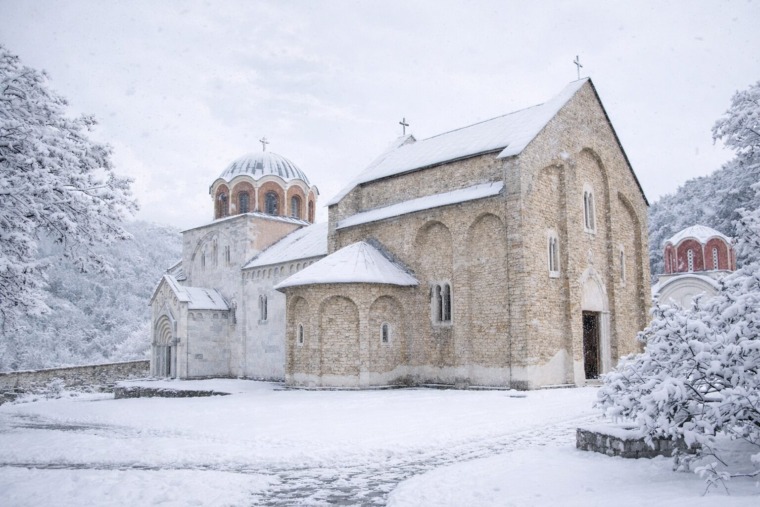The Ascension Church in Belgrade is a Serbian orthodox church dedicated to the Ascension of the Lord (The Ascension Day – Spasovdan in Serbian) and it is located in Admirala Geprata 19. Valuable icons and frescoes are treasured in this church, as well as the first bell that sounded in Serbia after centuries of Ottoman rule.
The Ascension Church was built in 1863 in the style of Romanticism with stylistic characteristics of Serbian medieval sacral architecture, and it is inspired by old Serbian monasteries, mostly by the Ravanica monastery. The initiative to build this church was passed by Prince Mihailo Obrenović and Metropolitan Mihailo and it was intended to be a “garrison church”.
The construction project of the Ascension Church was entrusted to Pavle Stanišić and Jovan Ristić, while the iconostas from the year of 1881 is the work of Stevan Todorović. His most beautiful compositions are: “St. Nicholas restores eyesight to Stefan Dečanski ”, “Tonsuring of St. Sava”, “Saint Simeon’s Admission to Hilandar”.
Frescoes were painted by the Russian painter Andrei Bicenko (Andrey Bitsenko) who painted Serbian rulers following the model of Serbian medieval frescoes, mostly from endowments of the Nemanjić family. Presented in richly decorated robes they are standing with their endowments in their hands.
The Ascension Day – the Ascension of the Lord
The Ascension of the Lord or the Ascension Day is a day when the resurrected Jesus was taken up to heaven. It is celebrated on a Thursday, the fortieth day of Easter, in the sixth week after Easter.
Two church houses and a bell tower are located in the churchyard. Today this bell tower has 5 bells of different size and order, including the bell from the old Saborna church which is considered to be the most significant historical relic among the bells of the Belgrade churches.
After centuries of church bell ringing ban in Serbia during the Ottoman rule, this bell was the one that on February 15th, 1830, sounded that Serbia got the Sultan’s Hatišerif (edict) transforming the country from a provincial into the vassal principality with legislative and administrative authorities.
The original flag of the Belgrade’s Governance is being kept in the Church, and since the Ascension Day is the patron-saint day of the city of Belgrade, each year after a liturgy a procession starts here and passes through the streets of Belgrade only to return once again to the Church.
The Church was built in the part of the city that was known as a rich quarter hence the numerous valuable presents kept in the treasury. Among gifts there are the icon of the Virgin with Christ by an unknown local author, the icon of Saint Demetrius, several Russian icons with silver frames, a large number of goldsmiths’ works and old books.
The Ascension Church has been destroyed several times. It was severely damaged in both world wars, and it only celebrated its hundredth’s anniversary completely reconstructed. A cross shaped monument to all victims of those wars can be seen in the churchyard.



















